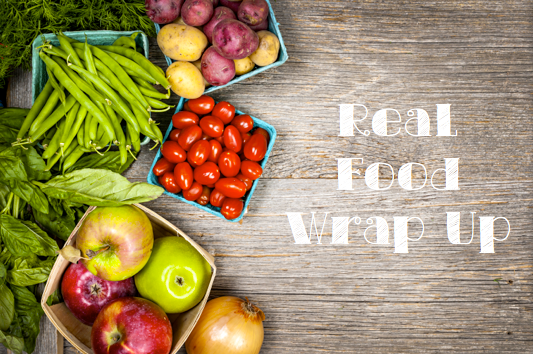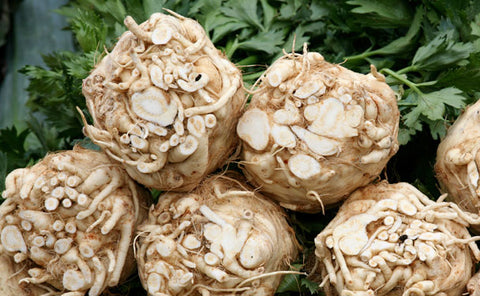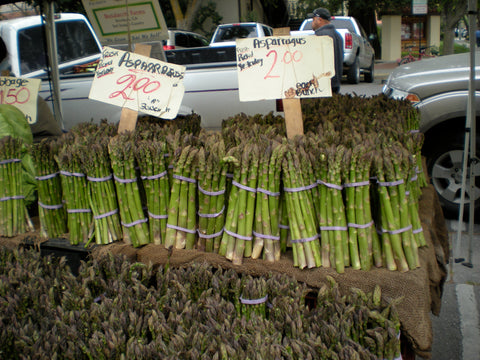Cooking Up Paleo at Little Green Pouch
At Little Green Pouch, we’re big fans of Real Food, and we’ve made it our mission to keep bringing you the best Real Food Pouch Recipes we can find, so you can fill your reusable food pouches with a delicious, fun variety of healthy foods.
During our 100 Days of Real Food challenge we featured Real Foodies, health benefits, recipes, and some great Facebook giveaways (we love to share the Little Green love!). As we head into Spring, we’re excited to keep our Real Food theme rolling, but with a Paleo twist.

Over the coming weeks, we’ll be featuring tasty Paleo Pouch Recipes from special guests, plus great info and resources from Paleo parents, nutritionists, health coaches and others in the Paleo Know.
New to Paleo? Here are the basics...
A Paleo diet is a Real Food diet that’s free of grains, refined sugars, legumes, dairy, potatoes, added salt, and refined oils--otherwise known as staples of the Standard American Diet. Here are a couple of handy Paleo-friendly food lists:
Aglaée the Paleo Dietician’s printable 1-page Paleo food list
A no-frills in-depth Paleo Food list from Desert Crossfit

And if you’re looking for incredibly well-researched info on the why’s and how’s of Paleo, The Paleo Mom’s blog is the place to go.
Now, you’re probably already onboard with Real Food. After all, you’re already whipping up your own healthy foods to put in your Little Green Pouches. But let’s say you have this friend, who starts the day Fruity Loopy and ends the day Pastry Puffed; for them, starting a Real Food or Paleo diet can be a big change. And they might ask, “What’s left to eat?”
We have good news for you. 1 Million Delicious Things.
To borrow a few from The Pouch, Spiced Up Yams & Broccoli, Avocado Smoothie, Sweet Peppers, Chicken & Basil, and Apple Parsnip Puree. (Have we confessed to you our love of parsnips?)
So if you’ve been wondering about Paleo but haven’t yet take in the plunge, now’s your chance to try it out. And if you’re already Paleo, stay tuned for a bunch of great new Paleo Pouch Recipes, give-aways, guest blog posts, and resources.
You’re going to love this food!
Maggie & Melissa
What We Learned from the 100 Days of Real Food Challenge

Has it really been 100 days already? Time flies when you’re having fun, I guess. Living and breathing Real Food these past 100 days has made us realize a lot of things. We thought we’d take a minute to share our thoughts on the challenge and hope you will share your experience as well. We are so far from experts, but here are 10 things we learned during the last 100 days (we thought 100 would be overkill).
1. We already prepared a lot of real food, without even thinking about it. “I credit this to my mother, grandmother and extended family who always make everything homemade,” - Magge
2. The transition to Real Food was easier than we thought. “To make my homemade macaroni and cheese Real Food macaroni and cheese, I just subbed white flour out for some white whole wheat (that King Arthur’s stuff is awesome), and the regular noodles for whole wheat ones. Done. And awesome, BTW.” - Maggie
3. Reading labels is important. Not only does this help extend that precious alone time at the grocery store (when did grocery shopping alone become such a luxury, BTW?), it also changed what we buy. The staples like bread, bagels and yogurt we used to buy without thinking twice have now been swapped out for Real Food versions. It’s the little things that make a big impact. Here's how to read food labels.
4. Eating Real Food is expensive. There just isn’t any way around this one, but we did find a lot of tips to make it more affordable. We know the cost is a big challenge, preventing a lot of people from eating Real Food. We are hopeful healthy, organic, whole foods will become more and more accessible to everyone in the coming years.
5. Rethink fast food. We don’t eat fast food, but what kid (or adult) doesn’t love chicken nuggets. Have you ever thought about making homemade chicken nuggets? They are so good and there is no mystery meat. Here is a recipe we used for inspiration. You probably won’t be able to make them look like dinosaurs, but the kids will get over that once they taste them.
6. Getting the kids involved is so fun. Stirring, pounding, mixing and pressing out tortillas was a highlight for Maggie and her boys.

7. Having a plan is key. This not only saved our sanity, but made it easy for everyone to be on board. “It’s easy for the nanny, my husband or my mom to look at the meal plan on the fridge and make Parker something to eat when I am away from home. It takes the guesswork out of cooking and makes feeding her healthy so easy.” - Melissa

8. Leftovers are the best. In addition to prepping and planning ahead, making a little extra of whatever we were having for dinner, meant we could turn it into lunch the next day.

9. The right tools make a big difference. “I would cook and puree a lot of fruits and vegetables for Parker on Sundays. But without a bunch of trays to freeze the purees in, I would have a bunch of pureed food that has to sit in the fridge while I wait for the trays to be available again. More trays would make it easier, but at $25 each, I just couldn’t spend the money for that convenience.” - Melissa. On the other hand, Maggie has already gotten her money’s worth of her newly acquired tortilla press.
10. We discovered new favorite foods. Farro, homemade ricotta, homemade almond milk are just a few of our new favorite things. We also learned to not fear fat.


Now it’s your turn...what did you learn during the challenge? What are your Real Food tips?
Real Food Making a Real Difference

"I've always had a passion for food and cooking fresh but it wasn't until I had a family that I saw the importance of it all. Five years ago, I had a beautiful baby girl. She was born 16 weeks early at 24 weeks gestation and weighed only 1 pound. A hard road was ahead of her but she came through it fighting all the way. Her biggest and most severe complication to overcome was a digestion problem called Necrotizing Enterocolitis (NEC), a life-threatening condition where the small bowel dies. She pulled through like a champ but for the first few years we had to strictly monitor what foods she ate. At the advice of her gastroenterologist, we stayed away from processed foods, additives, and dyes that would only cause her pain because she was so sensitive. We mostly did this anyway but now we were on alert. It became shocking how often anything processed contained a long list of man-made additives and it became even more apparent how important it was to choose fresh real foods. As my daughter got older she relied on every single calorie. At the age of 3 she weighed less than an 18-month-old. To give her anything processed was a joke as it did nothing nourishing for her. What was the point?
Today, she is a healthy and active little girl with a huge palate. She enjoys real foods and is far from a picky eater — something I truly believe has to do with feeding her a wide variety of FRESH foods from the very beginning. I am very thankful for every doctor that had a hand in saving her but I am grateful to her first gastroenterologist for putting me on the real food track and opening my eyes."

The Health Benefits of Eating Real Food
By Adrienne Santos-Longhurst from Healthline
If the old saying “you are what you eat” is true then a lot of us are in trouble because the typical American diet has become one that’s full of processed and fast foods that are high in fat, sugar, sodium, and chemicals. This explains much of the obesity epidemic and plays a major role in the alarming rise of cases of diseases such as type 2 diabetes, cardiovascular disease, and cancer. It also shows that we need to get back to eating real food now more than ever.
The benefits of eating real food are endless and especially apparent when you consider what goes into prepackaged foods. Here is a rundown of some of the benefits of eating real food along with some interesting (and scary!) facts about processed foods.
You know exactly what you’re putting into Your Body
Eating real food that you make yourself allows you to control the amount of additives like sugar and salt that goes into your food. In Get the Facts: Sodium’s Role in Processed Food put out by the Centers for Disease Control and Prevention (CDC), it’s reported that over 75 percent of the sodium Americans consume comes from processed and restaurant foods. Over 75 percent! Sodium is known to increase blood pressure which in turn can lead to heart disease and stroke making this statistic especially alarming.
Then there’s the hidden sugar in processed foods, including a lot of the foods that we think to be healthy like granola and fiber bars, yogurt, dried fruit, and more. Did you know that a 1.5 ounce box of dried raisons—yes, the same kind you threw into your kid’s lunch bag this morning or reach for when you want a “healthy snack”—can contain as many as 30 grams of sugar? We know that sugar makes us fat, but more and more information is coming out on the dangers of refined sugars and their link to type 2 diabetes, heart disease, and inflammation which are linked to cancer, arthritis and more.
Along with sugar and salt there are the other dangerous additives that you get to avoid when you opt for real food. Chemicals that help to preserve packaged food and those used to add color are also shown to be bad for us. As a matter of the Center for Science in the Public Interest has referred to artificial food dyes as “a rainbow of risks” in their publication of the same name.
You Get to Keep All the Good Stuff
Even though you do lose a small amount of nutrients when you cook certain foods, for the most part eating real food lets you get the nutritional benefits from what you eat. The vitamins, minerals, and antioxidants, and all of the other good stuff that keeps your immune system healthy and helps you feel and look your best stays intact when you eat real food so you’re not just satisfied (unlike when you eat empty calories in junk food) but you’re also healthier overall.
Fiber really is Fiber When You Eat Real Food
You know the products that you see at the grocery store with a big bright label on the package practically singing out about all of the added fiber they contain? There’s a good chance that the fiber they speak of isn’t what you’re thinking. Getting more fiber is something that we want which is precisely why more and more companies are trying to reel us in with the promise of more fiber. What they don’t tell you is that these isolated fibers don’t come close to providing us with the amount that we need. And that even in packaged foods containing whole grains, a lot of the nutrients and most of the fiber has been removed during processing with some being artificially put back in! Don’t settle for some added isolated fiber when eating real food gives you the health benefits you’re after. Get your fiber from whole grains, beans, and nuts, as well as fruits and vegetables and enjoy benefits like lower cholesterol and better bowel health and blood sugar levels.
As you can see, the benefits of eating real food go way beyond just your physical health—they help your peace of mind too by giving you the comfort of knowing that you’re not filling your body or that of your family with an endless list of ingredients that are full of health risks.
For more information on nutrition and its effects on your health, click here.
Adrienne is a freelance writer and author who has written extensively on all things health and fitness for more than a decade. When she's not holed-up in her writing shed researching an article or off interviewing health professionals, she can be found frolicking about her beach town with husband and dogs in tow or splashing about the lake trying to master the stand up paddle board.
References
- Get the Facts: Sodium’s Role in Processed Food. (2012). Centers for Disease Control and Prevention. Retrieved on February 12, 2014, from http://www.cdc.gov/salt/pdfs/sodium_role_processed.pdf
- Lynn, Lisa. (2011). Hidden Sugar: Top Sources. Doctor Oz. Retrieved on February 12, 2014, from http://www.doctoroz.com/blog/lisa-lynn/hidden-sugar-top-sources
- Healthline Editorial Team, Krucik, George, MD, MBA. (2013). Foods to Avoid with Arthritis. Healthline.com. Retrieved on February 12, 2014, from http://www.healthline.com/health-slideshow/foods-to-avoid-with-arthritis#4
- Kobylewski, Sarah, Ph.D. Candidate, Jacobson, Michael, F, Ph.D. (2010). Food Dyes A Rainbow of Risks. Center for Science in the Public Interest. Retrieved on February 12, 2014, from http://cspinet.org/new/pdf/food-dyes-rainbow-of-risks.pdf
- Mayo Clinic Staff. (2012). Dietary fiber: Essential for a healthy diet. Mayo Clinic. Retrieved on February 2014, from http://www.mayoclinic.org/fiber/art-20043983
From Farm to Pouch

No matter your intentions to cook, eat and serve Real Food, it is difficult. The grocery store is full of products labeled "real", "wholesome", "natural" and "organic". You have to decide what messaging you can trust when making choices for your family. When do you choose organic? How many ingredients on the label are too many? As a guide, we use the Dirty Dozen and Clean Fifteen as a rough guide for when to choose organic vs. conventional produce (because, let's be honest, organic food is expensive). We also roughly stick to the "no more than 5 ingredients" rule set forth by 100 Days of Real Food. Beyond this, I wanted to talk about some of my favorite ways to ensure our family eats Real Food that you can try as well.
Join a CSA
My number one tip is to join a CSA. What is a CSA? CSA stands for Community Supported Agriculture and has become a popular way for consumers to buy local, seasonal food directly from a farmer. Here are the basics: a farmer offers a certain number of "shares" to the public. Typically the share consists of a box of fruits and vegetables, but other farm products may be included. Interested consumers purchase a share (aka a "membership" or a "subscription") and in return receive a box of seasonal produce each week throughout the farming season.
Reasons I love being a CSA member:It allows us to support local farmers
We know EXACTLY where our food is coming from
We know the produce is fresh, organic and local
It gets us experimenting in the kitchen
When I say we know exactly where the food is coming from, I mean it. As a CSA member, you often have the opportunity to visit the farm. Being able to tour the place where your food is grown makes you even more invested in eating healthy, local food.



One of the best side effects of becoming a CSA member (besides playing with chickens and baby lambs) has been that it pushed us outside our comfort zone when it comes to the ingredients we cook with. While our household is a fruit and veggie loving one, we still tend to get into a rut, turning to the same go-to options.
With a CSA you don't choose what comes in the box each week—that's up to Mother Nature. When that gnarly looking celery root stares up at you from the box, what do you do? Why, you hop on the Internet (or our favorite, Pinterest) and research recipes. When the result is a creamy, rich alternative to mashed potatoes that is packed with fiber, potassium, magnesium and vitamin B6, all is right in the world.

Visit the Farmers Market
Trust me, we know we are spoiled in California when it comes to the accessibility of amazing produce year round. And depending on where you live, you may not have the option to join a CSA. But there are other ways to enjoy fresh, local produce. There are also larger-scale CSAs throughout the national similar to Farm Fresh to You. Here are 10 to check out.
Also, look for a farmers market near you and make it fun for the kids by letting them choose a new fruit or vegetable each trip that they want to try. Just make sure they know one of the rules is that once you cook it, they have to actually try it. :)

Grow it Yourself
Whether you have a windowsill, a porch, a small area in your yard, or an acre, you can take advantage of that space and grow your own herbs and produce. It doesn't get any more local than that. Check out our Farm to Pouch board on Pinterest for ideas and inspiration for growing your own produce.
Tell us: What are your favorite ways to eat farm-to-table?
Recent Articles
- 8 Ways To Get Organized For Back To School
- 10 homemade baby food recipes you can make in less than 10 minutes
- How to Make Homemade Almond Milk
- Clean Fifteen & Dirty Dozen — Your Guide to Buying Produce
- 10 Unique Baby Shower Gifts



